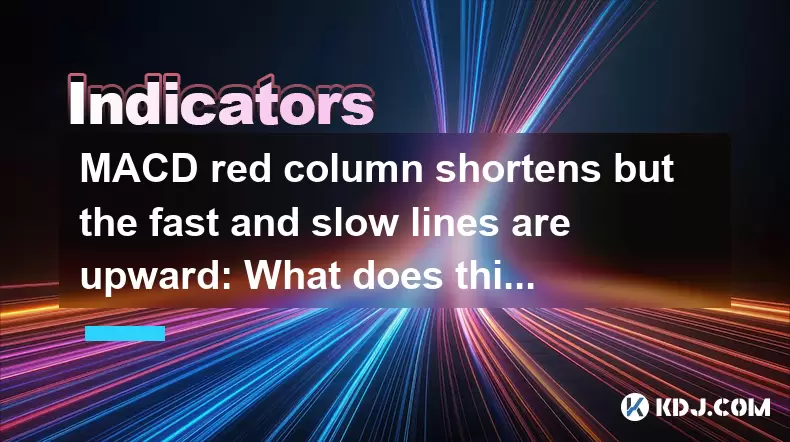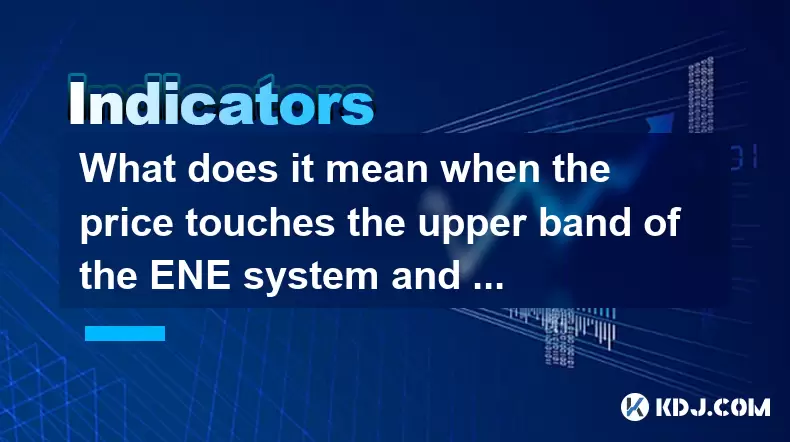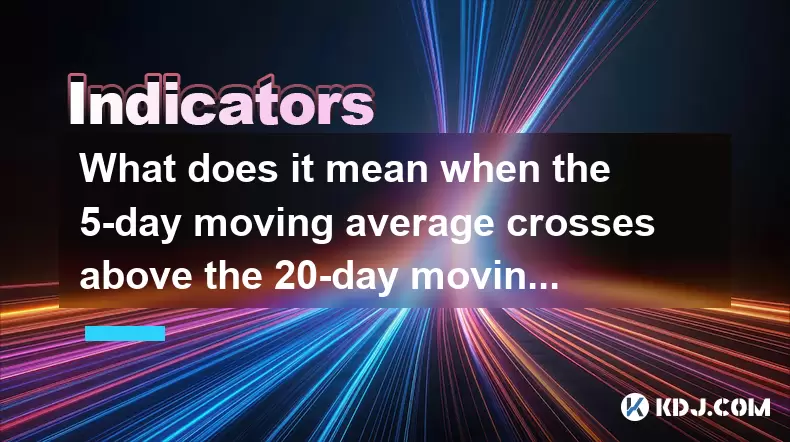-
 Bitcoin
Bitcoin $116700
0.48% -
 Ethereum
Ethereum $4213
6.27% -
 XRP
XRP $3.280
1.22% -
 Tether USDt
Tether USDt $1.000
0.02% -
 BNB
BNB $805.1
2.46% -
 Solana
Solana $180.2
2.65% -
 USDC
USDC $0.0000
0.02% -
 Dogecoin
Dogecoin $0.2412
8.50% -
 TRON
TRON $0.3356
-1.11% -
 Cardano
Cardano $0.8108
3.59% -
 Hyperliquid
Hyperliquid $43.89
8.53% -
 Chainlink
Chainlink $21.15
10.75% -
 Stellar
Stellar $0.4502
1.41% -
 Sui
Sui $3.935
4.69% -
 Bitcoin Cash
Bitcoin Cash $570.7
-1.75% -
 Hedera
Hedera $0.2636
3.28% -
 Avalanche
Avalanche $24.25
4.48% -
 Ethena USDe
Ethena USDe $1.001
0.03% -
 Litecoin
Litecoin $122.0
-0.08% -
 Toncoin
Toncoin $3.445
2.68% -
 UNUS SED LEO
UNUS SED LEO $8.979
-0.08% -
 Shiba Inu
Shiba Inu $0.00001379
6.73% -
 Uniswap
Uniswap $10.91
2.00% -
 Polkadot
Polkadot $4.106
5.39% -
 Dai
Dai $1.000
0.02% -
 Pepe
Pepe $0.00001227
9.07% -
 Bitget Token
Bitget Token $4.507
0.72% -
 Cronos
Cronos $0.1576
3.40% -
 Monero
Monero $272.0
-1.68% -
 Ethena
Ethena $0.7502
21.27%
MACD red column shortens but the fast and slow lines are upward: What does this differentiation phenomenon imply?
When the MACD red column shortens but the fast and slow lines move upward, it signals weakening bullish momentum despite an ongoing upward trend in cryptocurrency trading.
May 27, 2025 at 05:42 pm

The Moving Average Convergence Divergence (MACD) is a popular technical indicator used by cryptocurrency traders to identify potential trends, momentum, and reversal points in the market. The MACD consists of two lines - the MACD line (fast line) and the signal line (slow line) - and a histogram that represents the difference between these two lines. When the MACD red column shortens but the fast and slow lines are upward, it presents a unique situation that traders need to understand and interpret correctly. This article will delve into the details of this differentiation phenomenon and what it implies for cryptocurrency trading.
Understanding the MACD Indicator
Before diving into the specific scenario, it's essential to understand the basics of the MACD indicator. The MACD line is calculated by subtracting the 26-period Exponential Moving Average (EMA) from the 12-period EMA. The signal line is a 9-period EMA of the MACD line. The histogram represents the difference between the MACD line and the signal line, with positive values displayed as green or red columns and negative values as blue or gray columns, depending on the charting platform.
The Scenario: Red Column Shortens, Lines Move Upward
In the scenario where the MACD red column shortens but the fast and slow lines are moving upward, we see a divergence between the histogram and the lines. This indicates a complex market situation that requires careful analysis.
Interpreting the Shortening Red Column
The shortening of the red column in the MACD histogram suggests that the momentum of the bullish trend is decreasing. When the red column is getting shorter, it means that the distance between the MACD line and the signal line is narrowing. This can be an early sign that the bullish momentum is waning, and a potential reversal or consolidation might be on the horizon.
Analyzing the Upward Movement of the Fast and Slow Lines
On the other hand, the upward movement of both the fast and slow lines indicates that the overall trend remains bullish. The MACD line, being the faster-moving average, is still above the signal line, suggesting that the short-term trend is stronger than the long-term trend. The fact that both lines are moving upward reinforces the bullish sentiment in the market.
The Differentiation Phenomenon: What Does It Imply?
The differentiation phenomenon where the red column shortens while the fast and slow lines move upward creates a mixed signal for traders. It implies that while the overall trend remains bullish, the momentum behind the trend is weakening. This situation can be interpreted in several ways:
- Potential for a pullback or consolidation: The shortening red column suggests that the bullish momentum is fading, which could lead to a temporary pullback or a period of consolidation before the trend continues.
- Warning of a potential trend reversal: If the red column continues to shorten and eventually turns blue (negative), it could be an early warning sign of a potential trend reversal from bullish to bearish.
- Opportunity for profit-taking: Traders who are long on the cryptocurrency might see this as an opportunity to take profits, as the weakening momentum could lead to a price correction.
Trading Strategies Based on This Phenomenon
Given the mixed signals from this differentiation phenomenon, traders can consider the following strategies:
- Monitor for confirmation: Before making any trading decisions, it's crucial to monitor the MACD indicator for further confirmation. If the red column continues to shorten and the fast line crosses below the slow line, it could be a stronger signal of a potential reversal.
- Adjust stop-loss levels: Traders with open long positions might consider adjusting their stop-loss levels to protect their profits in case of a pullback or reversal.
- Look for additional indicators: To gain a more comprehensive view of the market, traders can combine the MACD with other technical indicators such as the Relative Strength Index (RSI) or the Moving Average Convergence Divergence (MACD) to confirm the signals.
Practical Example: Analyzing a Cryptocurrency Chart
To illustrate this phenomenon, let's consider a hypothetical example of a cryptocurrency chart:
- Initial Situation: The price of the cryptocurrency is in an uptrend, with the MACD line above the signal line and a tall red column in the histogram.
- Differentiation Phenomenon: As the price continues to rise, the red column in the MACD histogram starts to shorten, but both the MACD line and the signal line continue to move upward.
- Trader's Response: A trader observing this situation might:
- Monitor the MACD for further confirmation of a potential pullback or reversal.
- Consider taking partial profits if they have an open long position.
- Look for additional technical indicators to support their analysis.
Frequently Asked Questions
Q: Can the MACD indicator be used alone for trading decisions?
A: While the MACD is a powerful tool, it's generally recommended to use it in conjunction with other technical indicators and analysis methods. Relying solely on the MACD might lead to false signals and missed opportunities.
Q: How often should traders check the MACD indicator?
A: The frequency of checking the MACD depends on the trader's strategy and time frame. Short-term traders might check it more frequently, while long-term investors might review it less often. It's important to align the indicator's usage with the trader's overall approach.
Q: Is the MACD indicator suitable for all types of cryptocurrencies?
A: The MACD indicator can be applied to any cryptocurrency that has sufficient trading volume and price data. However, the effectiveness of the indicator may vary depending on the specific characteristics and volatility of the cryptocurrency being analyzed.
Q: Can the MACD be used for both bullish and bearish market conditions?
A: Yes, the MACD indicator is versatile and can be used to identify both bullish and bearish trends. The key is to interpret the signals correctly based on the specific market conditions and the trader's strategy.
Disclaimer:info@kdj.com
The information provided is not trading advice. kdj.com does not assume any responsibility for any investments made based on the information provided in this article. Cryptocurrencies are highly volatile and it is highly recommended that you invest with caution after thorough research!
If you believe that the content used on this website infringes your copyright, please contact us immediately (info@kdj.com) and we will delete it promptly.
- Trump, Crypto Vehicle, and WLFI Tokens: A New York Minute on the Latest Buzz
- 2025-08-10 00:30:12
- Wheat Penny Fortune: Unearthing Valuable Coins in Your Pocket Change
- 2025-08-10 00:35:19
- AI Coin Mania: Dubai Millionaires Eye 20x Gains!
- 2025-08-09 23:10:12
- ChatGPT's Hot Takes: Meme Coins to Buy Now for a Wild 2025!
- 2025-08-09 23:10:12
- Jurassic Park Vibes in Your Pocket: The Colourful Canadian Coin Featuring a Dinosaur Eye
- 2025-08-09 23:50:12
- Altcoins on the Radar: VeChain, Ethereum, and the Shifting Crypto Landscape
- 2025-08-09 23:50:12
Related knowledge

What does it mean when the price is trading above the SAR indicator but the red dots are densely packed?
Aug 09,2025 at 11:49pm
Understanding the SAR Indicator and Its Visual SignalsThe SAR (Parabolic Stop and Reverse) indicator is a technical analysis tool used primarily to de...

What does it mean when the MACD histogram continues to shorten but the price reaches a new high?
Aug 09,2025 at 09:29pm
Understanding the MACD Histogram and Its ComponentsThe MACD (Moving Average Convergence Divergence) indicator is a widely used technical analysis tool...

What does it mean when the Triple Moving Average (TRIX) turns downward but the price doesn't fall?
Aug 09,2025 at 12:42pm
Understanding the Triple Moving Average (TRIX) IndicatorThe Triple Moving Average, commonly known as TRIX, is a momentum oscillator designed to filter...

What does it mean when the price touches the upper band of the ENE system and then falls back?
Aug 10,2025 at 12:42am
Understanding the ENE Indicator StructureThe ENE (Envelope) indicator is a technical analysis tool used in cryptocurrency trading to identify potentia...

What does it mean when the Williams' oscillator repeatedly hits bottoms but fails to rebound?
Aug 09,2025 at 09:28am
Understanding the Williams %R OscillatorThe Williams %R oscillator, developed by Larry Williams, is a momentum indicator used in technical analysis to...

What does it mean when the 5-day moving average crosses above the 20-day moving average in a moving average system?
Aug 10,2025 at 12:49am
Understanding Moving Averages in Cryptocurrency TradingIn cryptocurrency trading, moving averages are among the most widely used technical indicators....

What does it mean when the price is trading above the SAR indicator but the red dots are densely packed?
Aug 09,2025 at 11:49pm
Understanding the SAR Indicator and Its Visual SignalsThe SAR (Parabolic Stop and Reverse) indicator is a technical analysis tool used primarily to de...

What does it mean when the MACD histogram continues to shorten but the price reaches a new high?
Aug 09,2025 at 09:29pm
Understanding the MACD Histogram and Its ComponentsThe MACD (Moving Average Convergence Divergence) indicator is a widely used technical analysis tool...

What does it mean when the Triple Moving Average (TRIX) turns downward but the price doesn't fall?
Aug 09,2025 at 12:42pm
Understanding the Triple Moving Average (TRIX) IndicatorThe Triple Moving Average, commonly known as TRIX, is a momentum oscillator designed to filter...

What does it mean when the price touches the upper band of the ENE system and then falls back?
Aug 10,2025 at 12:42am
Understanding the ENE Indicator StructureThe ENE (Envelope) indicator is a technical analysis tool used in cryptocurrency trading to identify potentia...

What does it mean when the Williams' oscillator repeatedly hits bottoms but fails to rebound?
Aug 09,2025 at 09:28am
Understanding the Williams %R OscillatorThe Williams %R oscillator, developed by Larry Williams, is a momentum indicator used in technical analysis to...

What does it mean when the 5-day moving average crosses above the 20-day moving average in a moving average system?
Aug 10,2025 at 12:49am
Understanding Moving Averages in Cryptocurrency TradingIn cryptocurrency trading, moving averages are among the most widely used technical indicators....
See all articles

























































































